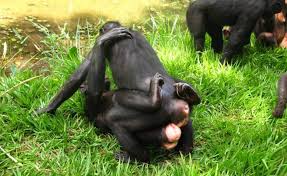Courtship is the period in a couple’s relationship that precedes their engagement and marriages or the establishment of an agreed relationship of a more enduring kind.
A courtship may be an informal and private matter between two people or a public affair or a formal arrangement with family approval. The average duration of courtship varies considerably throughout the world and depends on individual circumstances.
Parenthood means parentage, i.e., the state of being a parent. Parenthood involves the intersection of two distinct relationships: the one between parent and child and the other between the parents (or family) and the larger society or collective. This is called a relationship.
Parenting is the process of promoting and supporting the physical, emotional, social, and intellectual development of a child from infancy to adulthood.
Read Also: Aloe Vera Spines: Economic Importance, Uses, and by-Products
Courtship in the Animal Kingdom
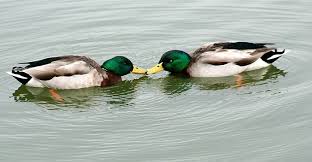
Many non-human animal species have mate-selection rituals also referred to as ‘courtship’ in an anthropomorphic (misleading) manner. Animal courtship may involve complicated dances, touching, vocalization, displays of beauty, or demonstrations of fighting prowess.
From a scientific point of view, courtship in the animal kingdom is the process in which different species select their partners for reproduction purposes. Generally speaking, the male initiates the courtship, and the female either accepts or rejects the male based on performance.
For example, the Selfish Gene model, proposed by Richard Dawkins, states that an individual of a particular species will mate with individuals from the same species that display good genes.
In this case, courtship is a display of “genes” carried by a particular organism, aimed at mixing with the genes of another organism in subsequent generations, ensuring the survival of those genes.
Examples of Courtship Behavior in the Animal Kingdom
1. Insects: The female uses odorous substances called pheromones to attract males from a distance, e.g., the gypsy moth (Lymantria dispar).
2. Birds: Boobies perform ritualized dances with many components, including whistling and an elaborate gesture known to ornithologists as sky-pointing. The male peacock displays his glorious plumage to the female.
3. Amphibians: Frogs, such as those of the Rana species, engage in courtship through songs.
Models of Parenting and Parenthood
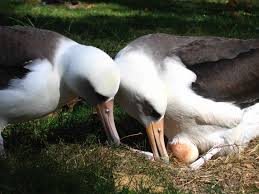
Developmental psychologist Diana Baumrind identified three main parenting styles in early child development: authoritative, authoritarian, and permissive. Most conventional and modern models of parenting fall somewhere between these styles.
1. Attachment Parenting: Seeks to create strong emotional bonds, avoiding physical punishment and accomplishing discipline through interactions.
2. Slow Parenting: Encourages parents to plan and organize less for their children, allowing them to enjoy their childhood and explore the world at their own pace.
3. Strict Father Model: An authoritarian approach that places strong value on discipline as a means of survival and success in a harsh world.
4. Nurturant Parent Model: A family model where children are expected to explore their surroundings with protection from their parents.
5. Single Parent Model: Involves a single individual assuming the parenting responsibilities.
Throughout history, parenting models have evolved with societal changes, reflecting varying cultural norms and expectations for child-rearing across different periods.
Homosexuality in Mammals

1. Humans
Human sexuality, aside from biological reproduction, serves social functions such as establishing physical intimacy, bonds, and hierarchies among individuals. It also plays a role in hedonistic pleasure derived from sexual gratification. Sexual desire, or libido, often manifests as a physical urge accompanied by emotions such as love, ecstasy, and jealousy.
The significance of sexuality in humans is reflected in various physical traits, including hidden ovulation, external scrotum and penis (suggesting sperm competition), absence of an os penis, permanent secondary sexual characteristics, and the formation of pair bonds based on sexual attraction. These traits indicate a strong evolutionary link between human and bonobo sexual behavior.
Human choices regarding sexuality are influenced by cultural norms, which vary widely. Restrictions are often shaped by religious beliefs or social customs. Sigmund Freud suggested that humans are born polymorphously perverse, meaning that various objects can be sources of pleasure.
Freud also theorized that individuals pass through five stages of psychosexual development, with potential fixation on any stage due to trauma. Alfred Kinsey proposed that people fall along a continuous scale of sexual orientation, with only small minorities being entirely heterosexual or homosexual. Recent neurological and genetic studies suggest that sexual tendencies may be inherent.
2. Dog
In domestic dogs, sexual maturity begins around six to twelve months for both males and females, though it may be delayed up to two years in some large breeds. Females typically experience their first estrous cycle during this period, with subsequent cycles occurring biannually.
At the peak of the cycle, females enter estrus and become receptive to copulation. Given that ova remain viable for fertilization for about a week after ovulation, females can mate with multiple males.
Dogs give birth to their litters approximately 56 to 72 days after fertilization, with an average of 63 days. Litter size varies by breed, with smaller breeds typically producing one to four puppies, while larger breeds may have as many as twelve.
Some dog breeds, such as French Bulldogs, have acquired traits through selective breeding that complicate reproduction. For example, male French Bulldogs are often unable to mount females and may require artificial insemination to reproduce.
3. Raccoon
Raccoons typically mate from late January to mid-March, though the exact timing can vary regionally. For instance, while raccoons in southern states mate later than average, those in Manitoba have a mating season that peaks in March and extends until June.
Males search for females during their three- to four-day fertility window, often congregating at central meeting locations. Copulation, including foreplay, can last over an hour and occurs over several nights. In social groups, even weaker males may have opportunities to mate when stronger males cannot mate with all available females.
Read Also: Aloe Vera Mucilage cells: Economic Importance, Uses, and by-Products
Homosexuality in Birds
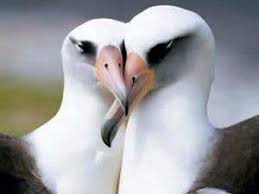
1. Chicken
To initiate courtship, some roosters perform a “circle dance” around or near a hen, often lowering the wing closest to her. This dance triggers a response in the hen’s brain, and when she responds to the rooster’s call, he mounts her for fertilization.
Homosexuality in Reptiles
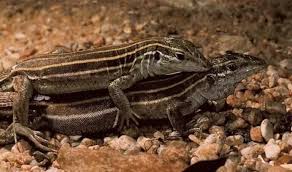
1. Desert Tortoise
Tortoises mate in the spring and fall. Female tortoises lay clutches of three to five hard-shelled eggs (the size and shape of ping-pong balls) in June or July. The eggs typically hatch in August or September. Wild females can produce two or three clutches annually.
2. Wood Turtles
Wood turtles reach sexual maturity between 14 and 18 years of age, with low fecundity but high adult survival rates. Males establish hierarchies without territorial behavior, and mating peaks in spring and fall. However, mating may occur year-round, including in December. In one instance, a female wood turtle hybridized with a male Blanding’s turtle.
The courtship ritual involves several hours of ‘dancing’ near a stream, initiated by males nudging the female’s shell, head, and limbs. The female may flee, followed by the male. If the mating ritual continues, the male bites the female’s head and mounts her.
Copulation typically occurs in water, lasting between 22 and 33 minutes, though it can happen on land as well. Females may be mounted multiple times during peak mating periods, resulting in hatchlings from different males in the same clutch.
Nesting occurs from May to July, with females selecting sites that receive sunlight, have soft soil, and are free from flooding. Females may create false nests before laying eggs.
Each clutch contains three to 20 eggs, which are oval, white, and average 3.7 cm in length. Hatchlings emerge between August and October, measuring approximately 3.65 cm. Female wood turtles typically lay one clutch per year.
The wood turtle grows rapidly in its first years, reaching 11.5 cm by age five and 16.5 to 17 cm by age 16, depending on gender. Wild wood turtles can live for up to 40 years, with captives living up to 58 years.
Homosexuality in animals remains a controversial subject for social conservatives because it suggests the naturalness of homosexuality in humans. However, others argue that animal behavior does not translate to moral lessons.
Homosexual behavior in animals has been assigned various terms over time, though it is best described as animals exhibiting homosexual tendencies. This article follows modern research by applying the term homosexuality to all sexual behaviors between same-sex animals, including copulation, genital stimulation, mating games, and sexual displays.
Do you have any questions, suggestions, or contributions? If so, please feel free to use the comment box below to share your thoughts. We also encourage you to kindly share this information with others who might benefit from it. Since we can’t reach everyone at once, we truly appreciate your help in spreading the word. Thank you so much for your support and for sharing!
Read Also: Environmental Management Tips

